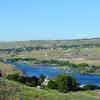Home
Tips & Tricks
Sony Tips
Sony a6400
Sony a6300
Sony a6000
Canon Tips
Canon M50 Mark II
Canon M50
Canon 6D Mark II
Canon 6D
Canon 7D Mark II
Canon 7D
Canon 90D
Canon 80D
Canon 77D
Canon 70D
Canon 60D
Canon T7 · 2000D
Canon T7i · 800D
Canon T6s · 760D
Canon T6i · 750D
Canon T6 · 1300D
Canon T5i · 700D
Canon T5 · 1200D
Canon T4i · 650D
Canon T3i · 600D
Canon T3 · 1100D
Canon T2i · 550D
Canon SL2 · 200D
Canon SL1 · 100D
Nikon Tips
Nikon D750
Nikon D500
Nikon D7500
Nikon D7200
Nikon D7100
Nikon D5600
Nikon D5500
Nikon D5300
Nikon D5200
Nikon D5100
Nikon D3500
Nikon D3400
Nikon D3300
Nikon D3200
Nikon D3100
Cheat Sheets
Sony Cheat Sheets
Sony a6300
Sony a6000
Canon Cheat Sheets
Canon M50 Mark II
Canon M50
Canon 6D Mark II
Canon 6D
Canon 7D Mark II
Canon 7D
Canon 90D
Canon 80D
Canon 77D
Canon 70D
Canon 60D
Canon T7 · 2000D
Canon T7i · 800D
Canon T6s · 760D
Canon T6i · 750D
Canon T5i · 700D
Canon T6 · 1300D
Canon T5 · 1200D
Canon T4i · 650D
Canon T3i · 600D
Canon T3 · 1100D
Canon T2i · 550D
Canon SL2 · 200D
Canon SL1 · 100D
Nikon Cheat Sheets
Nikon D750
Nikon D500
Nikon D7500
Nikon D7200
Nikon D7100
Nikon D5600
Nikon D5500
Nikon D5300
Nikon D5200
Nikon D5100
Nikon D3500
Nikon D3400
Nikon D3300
Nikon D3200
Nikon D3100


Comments
When shopping at Amazon and elsewhere make very sure too that the camera you get is a Nikon USA model and not a grey market one. Not only does Nikon refuse all service to grey market equipment, but many of the retailers substitute lenses and other package contents and you may not get the lenses that are usual, or the correct battery, etc.
There is nothing inherently wrong with grey market equipment, but it's a gamble on repair work and you may not get the same kit that Nikon USA sells. You may also not get the correct instruction manuals and software if there is any. Read descriptions very carefully. If you don't see the retailer touting that it's a Nikon authorized USA product, assume it's not.
The 10-20 lens is, from what I've heard, very good. But if you get the camera with an 18-55, or already have one, you'll get a fairly wide angle. While awaiting a good ultrawide lens (consider Sigma and others too for this), you might do well with stitched panoramas. Microsoft makes a free stitching program called "ICE," which, although it works only on JPG format files, does a surprisingly good job. While very wide panoramas can be difficult and tend to distort oddly, it's pretty easy and effective to shoot a few overlapping frames and get a very dense and nicely stitched picture. You can pan both sideways and up and down in the same sequence.
I've gotten some decent panoramas this way. It's especially effective if you shoot in vertical rather than horizontal mode. Shoot three overlapping shots in vertical mode, and you end up pretty close to double the field of view you'd get ordinarily with a single horizontal shot.
The hood is to minimize flare from oblique light. Its effect is fairly minimal on a very wide angle lens, but still very important, and I'd advise you use it as much as you can, even though it's a little clumsy. Flare can appear, not only as visible flaws in a picture, but as a general lack of contrast or haziness, and the less of that, the better.
By the way, since my initial posting on this, I too have gotten that lens, and agree that it's a very nice one, especially for the money. I took it travelling (a trip to the Arctic), and found it good and sharp, very light and compact, and the pulse-motor focusing is silent and super-fast. If you have a camera recent enough to function at all with it (D3200 and below, D7000, D5200 and below I think, out of luck), it's well worth considering if you need wide angles. One of my major complaints about the DX format as opposed to FX is that it's harder and more expensive to get a good wide angle. This lens goes a good way in correcting that.
The built-in camera flash will not work with this lens, even at distances, but the lens has good VR, and stays sharp at very low shutter speeds.